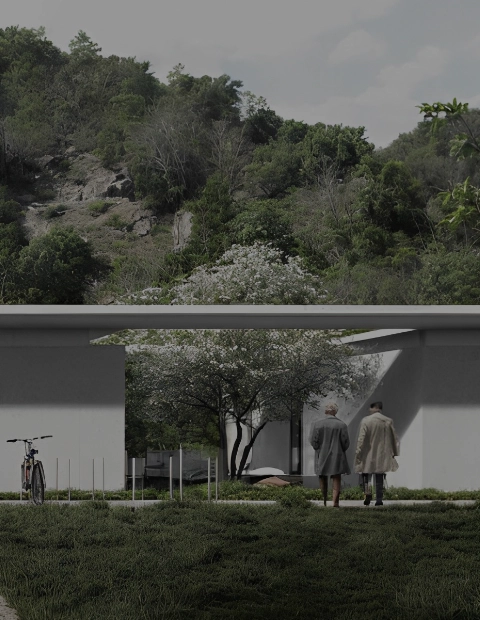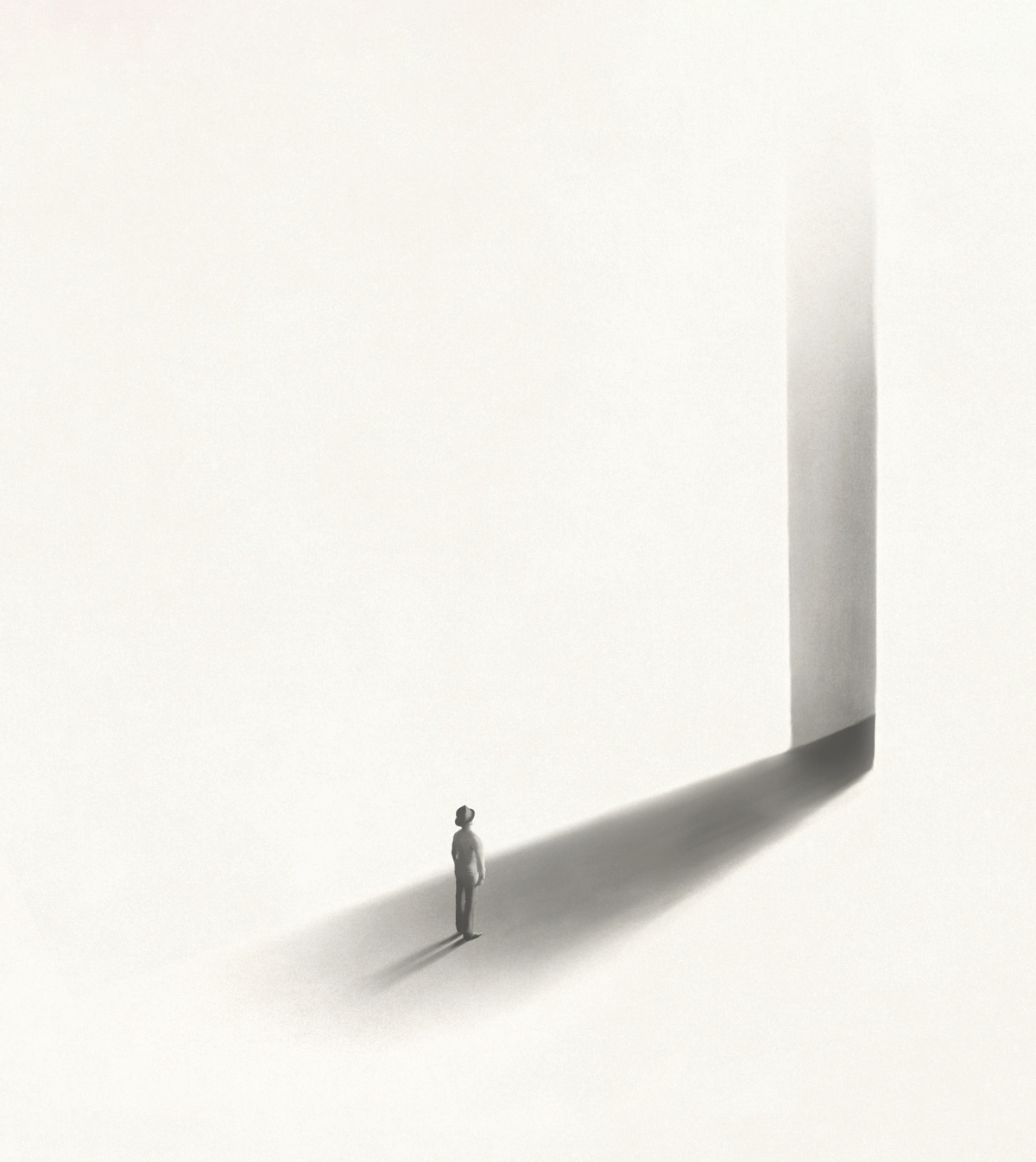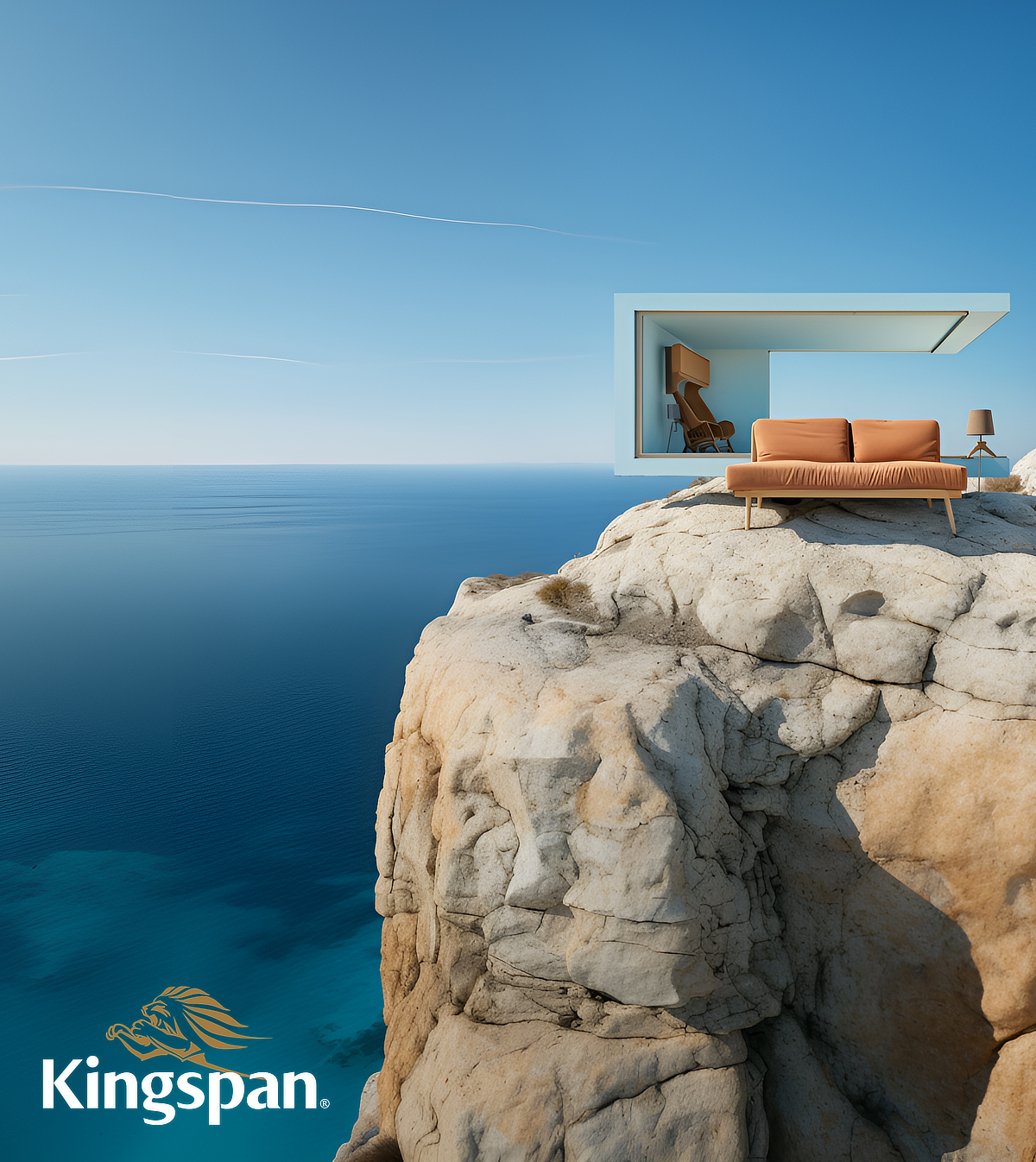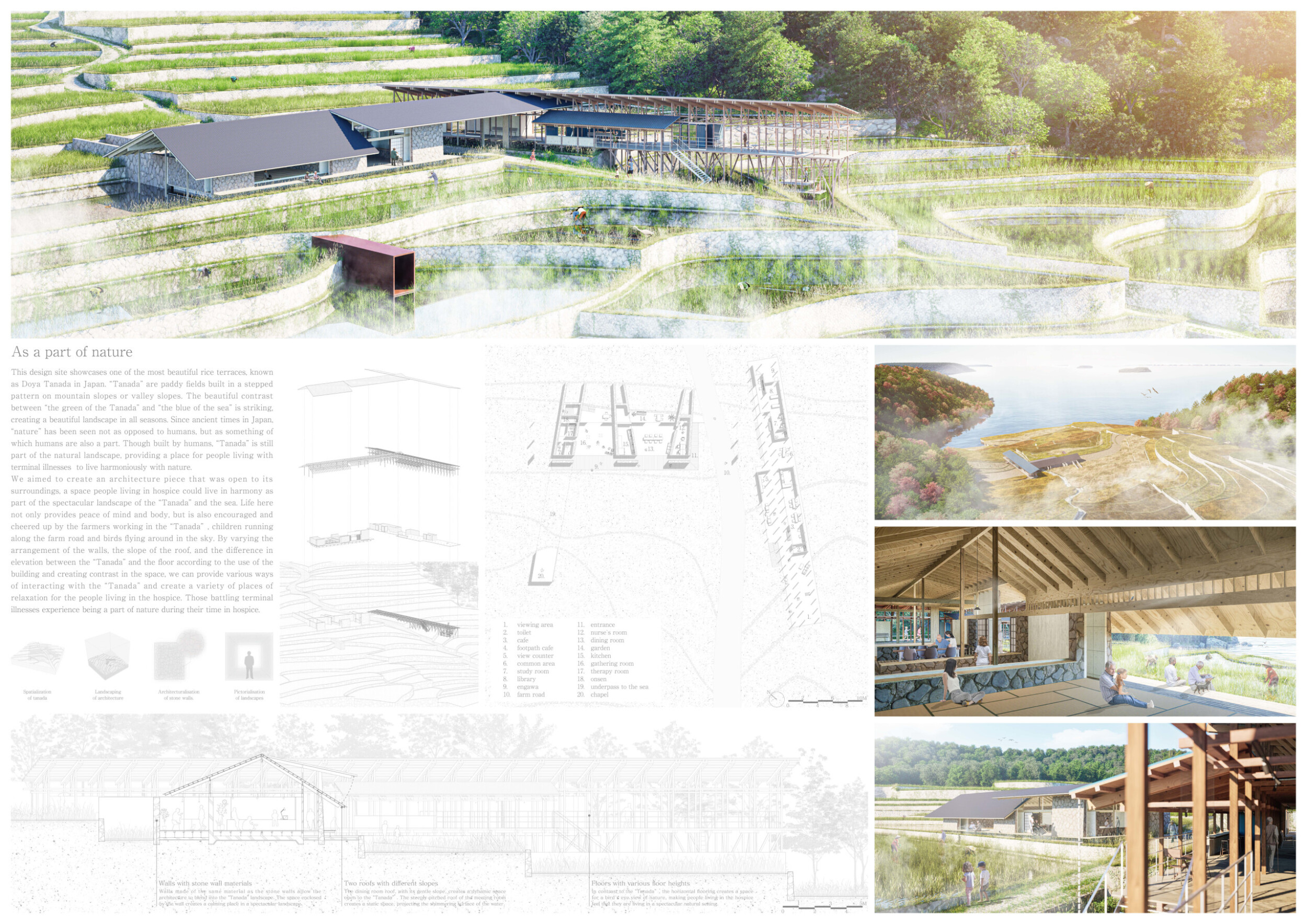Introduction
Buildner is pleased to announce the results of its third edition of the Hospice – Home for the Terminally Ill Competition, an architectural ideas contest focused on creating supportive spaces for individuals facing terminal illnesses.
This year's competition continued exploring design concepts that go beyond medical treatment. Architects were invited to innovate and develop environments that promote comfort, dignity, and a sense of community for those dealing with life-threatening conditions.
Participants were tasked with designing a facility that accommodates up to fifteen visitors and five staff members, including essential spaces such as a common area with a library, a gathering room, a chapel, a kitchen, a dining room, a nurse’s room, and a therapy room for psychological support. They were encouraged to choose a theoretical site in their own country, allowing them to integrate local cultural, environmental, and social contexts into their designs. The competition aimed to showcase how thoughtful design can provide comfort and support during challenging times.
Buildner worked with an experienced international jury to review the received submissions: Alan Dunlop is an award-winning architect known for the Hazelwood School for dual sensory-impaired children and is a fellow of the Royal Incorporation of Architects in Scotland. Dr. Nirit Pilosof is an architect and researcher at Sheba Medical Centre, focusing on healthcare and technology, with faculty positions at Tel Aviv University and the University of Cambridge. Rubén García Rubio, co-founder of studioVRA, is an Assistant Professor at Tulane University with two Ph.D.s in architecture. Arturo Mc Clean works as Communications Manager at Miralles Tagliabue EMBT, contributing to projects like the Kálida Sant Pau Centre for cancer patients. Rion Philbin, founder of No So Studio, emphasizes playful design, exemplified by the Casa-mac home for a blind woman. Susanne Siepl-Coates, a former faculty member at Kansas State University, researched the link between architecture and human well-being. Sonsoles Vela Navarro, co-founder of studioVRA, has 15 years of architectural experience and is an Adjunct Assistant Professor at Tulane University. Steven Wright is a Principal at Perkins Eastman, specializing in healthcare design with degrees from the University of Virginia and Yale University.
Buildner and its jury panel thank all partipants for submitting their thoughtful work, and congratulate the winners.
We sincerely thank our jury panel
for their time and expertise
Alan Dunlop
Architect, Alan Dunlop Architects
UK

Dr Nirit Pilosof
Head of Research in Innovation and Transformation at Sheba Medical Centre
Israel

Rubén García Rubio
co-founder of studioVRA
Spain

Arturo Mc Clean
Architect at Barcelona based Miralles Tagliabue EMBT
Spain

Rion Philbin
Principal at No So
USA

Sonsoles Vela Navarro
co-founder of studioVRA
Spain

Susanne Siepl-Coates
Professor Dipl. Ing. Emerita of Architecture at Kansas State University
USA

Steven Wright
Principal at Perkins Eastman
USA

Enter the next competition edition

Design a safe and supportive space to those struggling with a terminal illness
1st Prize Winner +
Buildner Student Award
Buildner Student Award
QUARRY GARDEN - OASIS OF HOPE

We appreciate the fact that competitions contribute to the development of new and high-quality projects. For the client, this means gaining access to multiple solutions for a specific brief, which enhances the quality of the final design by validating it through various approaches. Besides, we embrace competition as it stimulates our interest in the perspectives of other architects and the diversity of ideas. It is highly positive to see that architectural competitions are gaining prominence these days and encompass a wide range of interesting briefs at diverse scales.
Read full interview Slovakia
Slovakia
Jury feedback summary
The design of this hospice is inspired by the surrounding landscape, with a focus on harmony between nature and architecture. The central square courtyard, symbolizing stability and balance, serves as a meeting point where the internal and external environments converge. Positioned to create vistas of the landscape from all angles, the building’s layout comprises five blocks, each with a distinct function. The perforated square roof and atriums seamlessly connect the interior with the outdoors, enhancing tranquility. Situated in an abandoned quarry, the project repurposes the land to create a therapeutic space, where the unique topography and serene landscape promote healing and well-being, while honoring the site's historical significance.

A quite exceptional proposal supported by a strong, empathetic narrative and well considered and clear planning diagram, showing thought process. Deceptively simple planning, revealing a light filled well thought through proposal, well planned with very appealing central space of an appropriate human scale, which sits well withing its setting.
Alan Dunlop / Buildner guest jury
Architect, Alan Dunlop Architects, UK

The design demonstrates the potential of repurposing abandoned quarries into therapeutic sites. The proposed design creates a flow between indoor and outdoor spaces, connecting the structure with the surrounding landscape.
Dr Nirit Pilosof / Buildner guest jury
Head of Research in Innovation and Transformation at Sheba Medical Centre, Israel

An interesting combination of covered and open-air spaces, and the horizontal relationships between them.
Rubén García Rubio / Buildner guest jury
co-founder of studioVRA, Spain

A simple cubic form under a floating flat roof reminiscent of a pavilion, with a central courtyard carved out with many opportunities to experience it and the surrounding park from inside. The project is believably scaled with private functional spaces accommodated in smaller ‘poche ’ blocks’ such that much of the remaining space is shaped to be available for public use.
Susanne Siepl-Coates / Buildner guest jury
Professor Dipl. Ing. Emerita of Architecture at Kansas State University, USA
Buildner's commentary, recommendations and techniques review
Order your review here
The project is well-presented, featuring a balanced layout with clear, modest renderings on the right and a combination of drawings, diagrams, and sketches on the left. However, the presentation could be improved with concise texts that highlight key ideas, using subtitles or sections for easier and more direct reading. Adding annotations to the imagery would help clarify materials, spaces, and design concepts. Read more Including a detailed architectural element—such as a material breakdown or wall/roof structure—would provide greater complexity and insight into the building's systems, beyond the heavy dark lines currently shown in the plans and sections.
-
9/10 Linework

-
9/10 Quality of drawings

-
9/10 Balance of color

-
9/10 Layout

-
8/10 Hierarchy

-
7/10 Annotation

-
7/10 Text

-
8/10 Clarity of story

-
9/10 Clarity of diagrams

-
9/10 Quality of overall presentation

Enter an open architecture competition now

Troll’s Tongue Observation Platform
2nd Prize Winner
The Gift of Time - A Place of Peace and Dignity
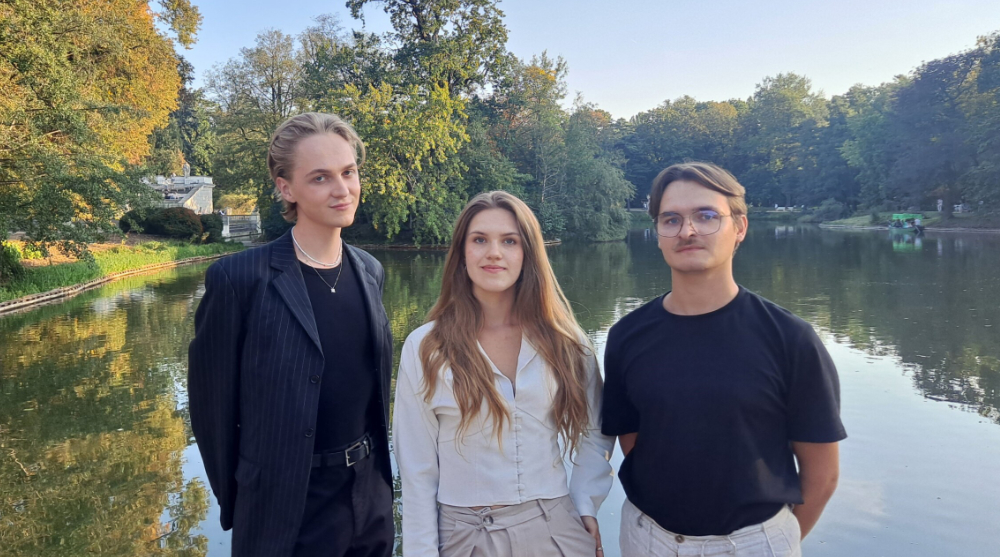
We participate in architectural competitions because they offer a great opportunity to develop and test our ideas in real-world contexts. Competitions push us beyond the academic framework, challenging us to face practical problems and think creatively. They also give us the freedom to experiment with different concepts and design approaches. Through these competitions, we exchange ideas with others, gain valuable experience in teamwork, and improve our time management skills—essential for our future careers. We believe that participating in these events not only sharpens our abilities but also allows us to bring fresh perspectives to the ongoing dialogue about architecture.
Read full interview Poland
Poland
Jury feedback summary
Located in the heart of Konstancin-Jeziorna, some 20 kilometers from Warsaw, The Gift of Time is designed to offer a sanctuary for contemplation and healing. Set amidst natural reserves and historic villas, and close to local hospitals, it complements the area's healthcare network with additional treatments, psychological care, and a strong sense of community. The project redefines palliative care by combining compassionate design with sustainability. Blending traditional and modern elements, it features large, open spaces for group activities, secluded areas for reflection, and inner courtyards surrounded by greenery. Built with locally sourced materials, including hempcrete for thermal efficiency, the hospice is barrier-free, ensuring accessibility for all, while nurturing both people and the environment.

The project's barrier-free design is commendable, as is its sustainable design and construction. The planning is sophisticated and addresses the programmatic needs well. There is interesting integration with the surrounding area and its features and history. However, the interior design could be improved to be richer and more inspiring, as it is very monochromatic.
Steven Wright / Buildner guest jury
Principal at Perkins Eastman, USA

Appropriate, human scale with a clever plan and section, supported by a empathetic narrative. Well sited within a lovely site that encourages engagement and responds well to the natural surroundings. Very good choice of materials, clearly residential. Appropriate scale and clearly non institutional.
Alan Dunlop / Buildner guest jury
Architect, Alan Dunlop Architects, UK
Buildner's commentary, recommendations and techniques review
Order your review here
The presentation showcases many excellent features, including a unique sketch-style aerial perspective and a richly detailed site plan that beautifully convey the project's aspirations and how it adapts to its surroundings. The renderings effectively illustrate the project's scale and materiality, with its many cell-like structures fitting seamlessly into the surrounding forest. Read more However, the text would benefit from revision, as it is currently presented in small, dense blocks that are difficult to read. Dividing the text into clearer, more concise points, with highlighted or bold words to emphasize key ideas, would improve readability. Additionally, including a construction-level detail of the structure or roof would greatly enhance the proposal by demonstrating its feasibility as a buildable work of architecture.
-
9/10 Linework

-
10/10 Quality of drawings

-
10/10 Balance of color

-
9/10 Layout

-
9/10 Hierarchy

-
7/10 Annotation

-
6/10 Text

-
8/10 Clarity of story

-
8/10 Clarity of diagrams

-
9/10 Quality of overall presentation

3rd Prize Winner
Crossing Paths

Architecture competitions are opportunities for you to push your creative limits as a designer. Such creative freedom is rare in the professional world, so seize the opportunity! Moreover, architecture competitions expose us to a wider variety of building typologies, programs, and scales not fully explored in academia. As we continue to engage with a diverse range of design prompts and challenges, our understanding of the built world further deepens. Many projects from these competitions have been a source of inspiration, and by participating, we aim to contribute to that spread of inspiration.
Read full interviewJury feedback summary
Crossing Paths is designed to foster meaningful connections between people and nature. Located near Lake Simcoe, Canada, the project draws inspiration from the area's vibrant, outdoor-friendly community. The hospice creates opportunities for interaction, countering the isolation often felt by the terminally ill. Central to the design is an organic veranda that forms alcoves for social encounters and connects public and private spaces, bringing nature into the building. Private rooms offer serene river views, while a communal greenhouse encourages gardening and strengthens bonds among residents, staff, and visitors. The use of CLT columns and ribbed beams seamlessly integrates the hospice into the forest, enhancing the relationship between the built environment and the natural landscape.

A fantastic green space producing ambiguous thresholds. -Sonsoles Vela Navarro This project exemplifies the successful creation of a space where the interaction between people and nature is the central feature. It also demonstrates a seamless integration of public and private areas, allowing nature to flow naturally into these spaces.
Arturo Mc Clean / Buildner guest jury
Architect at Barcelona based Miralles Tagliabue EMBT, Spain

The activities generated by the greenhouse, such as the production of fresh produce, plant cultivation, and gardening, strengthen the connections between residents and visitors, fostering a sense of community and collaboration.
Arturo Mc Clean / Buildner guest jury
Architect at Barcelona based Miralles Tagliabue EMBT, Spain
Buildner's commentary, recommendations and techniques review
Order your review here
The submission features excellent graphics with a clear hierarchy that guides the reader through the project and effectively communicates the design intent. The vibrant, detailed renderings are engaging and offer a strong sense of variation. The plan skillfully balances organic shapes with more rigid structures, giving the presentation a similar mix of visual elements. Read more However, the overlay of the site plan on top of the rendering is less successful, as the plan tends to get lost and doesn’t clearly convey the building’s connection to nature as the renderings do. While the enlarged section illustrates the materials well, adding another layer of detail to the drawing would further enhance the submission.
-
8/10 Linework

-
9/10 Quality of drawings

-
9/10 Balance of color

-
9/10 Layout

-
10/10 Hierarchy

-
8/10 Annotation

-
7/10 Text

-
8/10 Clarity of story

-
8/10 Clarity of diagrams

-
9/10 Quality of overall presentation

Buildner Sustainability Award
THE SYLVAN TRAIL

Because we want to learn more skills and have the opportunity to develop an interesting project in addition to those in our school’s curriculum.
Read full interview United States
United States
Jury feedback summary
Each patient in the hospice is provided with a personal pod made from prefabricated mycelium modules, which offer excellent structural and thermal properties. Upon arrival, a tree is planted in the center of each pod, creating a living memorial that remains after the patient has passed, contributing to both nature and remembrance. The pods rest on an elevated wooden platform that serves as a corridor between functional areas, and when pods are relocated, the platform becomes a public walking path. Designed with modularity in mind, the pods can be moved easily while maintaining spatial harmony. This flexible design ensures the hospice adapts to each resident’s journey, fostering a deep connection to nature and community.

Interesting types of spaces, particularly the patient's pods, and the construction system.
Rubén García Rubio / Buildner guest jury
co-founder of studioVRA, Spain

I'm in love with the innovative nature of this care facility, and am extremely excited by this project that marries nature with architecture, and a unique approach to hospice as an archi-type.
Rion Philbin / Buildner guest jury
Principal at No So, USA

A great idea to couple the individual pod with the tree which remains behind after the patient departs and the pod is relocated. The use of mycelium as a building material is commendable. The focus is on the individual journey, though not much on the shared, communal experience. Also, when the pods move, the platform will need to be extended or re-configured in some way.
Steven Wright / Buildner guest jury
Principal at Perkins Eastman, USA
Buildner's commentary, recommendations and techniques review
Order your review here
The project offers a unique perspective and plan that highlight its distinctive form and overall layout. Read more The presentation would greatly benefit from the use of larger and more varied texts: currently the text is small and hard-to-read; and the main text is the same size and font as the annotations, lending to an imbalance and lack of hierarchy - where should the reader focus for key information? The sectional axonometric, while visually interesting, would benefit from lighter shadows and more varied colors, as it currently appears dark. Additionally, the large sectional drawing provides a good understanding of spatial arrangement but could use more varied line weights to distinguish between cut lines and elevation lines, as well as offer more details on materiality.
-
6/10 Linework

-
7/10 Quality of drawings

-
7/10 Balance of color

-
7/10 Layout

-
8/10 Hierarchy

-
8/10 Annotation

-
7/10 Text

-
8/10 Clarity of story

-
9/10 Clarity of diagrams

-
7/10 Quality of overall presentation

Honorable mentions
Hospice: Home for the Terminally Ill - Bongawan, Malaysia
TAMTHANH - Hillside Water Garden

We view competitions as a valuable platform for enhancing teamwork, honing our skills, and challenging our preconceptions of design. By fostering dialogue and maintaining a continuous exchange as we grow in our respective environments, we can build a strong foundation for future competitions and strengthen our long-term collaboration. Competitions also provide opportunities to share ideas and engage with current issues. We chose this particular competition for its social impact, as designing a hospice for the terminally ill aligns seamlessly with our social responsibility as architects.
Read full interviewA good place to die – united in care

Architecture competitions are a great opportunity to get to know new topics or new building typologies that you maybe have never used before. I think that every competition is a win for you - you always gain new knowledge and new ways of thinking!
Read full interview Germany
Germany
THE BRIDGE
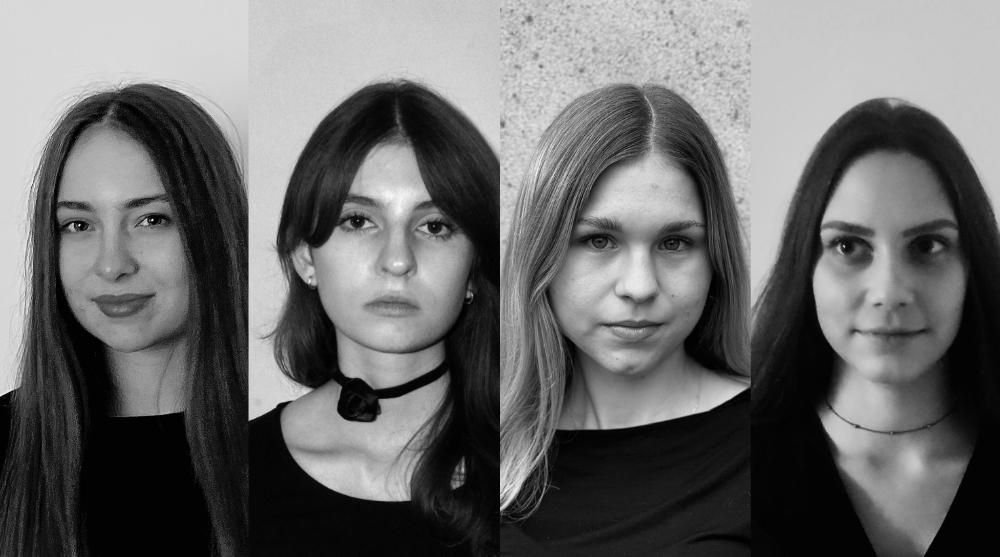
Participating in architectural competitions not only allows us to grow but also helps us face a variety of challenges and explore design solutions in different contexts—whether social, environmental, or otherwise.
Read full interview Poland
Poland
Basque Country Hospice: Building Memories in Care
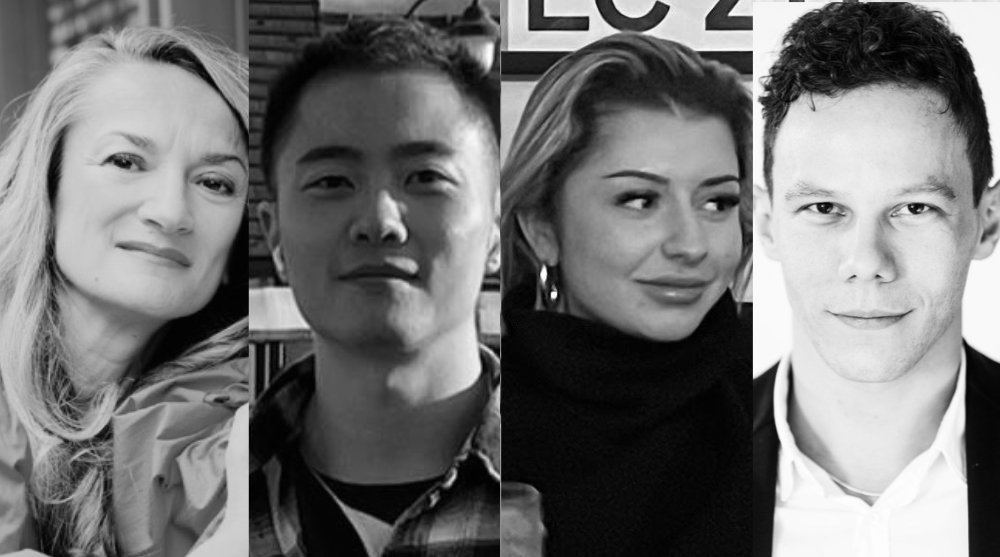
International ideas competitions and design competitions provide the best opportunities to design according to a brief and scope of work. From concept development and site selection or analysis (if already provided) to architectural design and its refinement, these challenges allow for remarkable outcomes where architecture is created with its users in mind. Participating in these competitions fosters critical thinking and adaptability, particularly when addressing sensitive projects like the Hospice, which is deeply meaningful to our team. By embracing diverse contexts, this process encourages thoughtful, inclusive, and responsive architectural practices that resonate with both place and purpose.
Read full interviewGROWING URBAN OASIS

Hospice care is an issue that every individual and family will eventually face. Having personal experience in caring for the elderly at home, I am deeply concerned about their later years. Ensuring their happiness can bring comfort to the entire family.
Read full interview China
China
Shortlisted projects
NIRVANA
THE SYLVAN TRAIL
Solace Care Centre
Toronto Metropolitan University - TMU
+22 points Buildner University Rankings! Canada
Canada The beginning of life was crying, but the end of life was laughter
Urban Sanctuary
The old Man and the Sea
THE BRIDGE
Silesian University of Technology - Faculty of Architecture (Wydział Architektury Politechniki Śląskiej)
+72 points Buildner University Rankings! Poland
Poland Bliss Hospice
International University of Rabat, UIR – Université Internationale de Rabat
+22 points Buildner University Rankings! Morocco
Morocco Herbal Medicine Hospice Center
GSAPP, Columbia University Graduate School of Architecture
+22 points Buildner University Rankings! United States
United States Memory House
As a part of nature
Fractal Reflections
Le Bord du Lac
TU/e, Eindhoven University of Technology
+22 points Buildner University Rankings! Netherlands
Netherlands QUARRY GARDEN - OASIS OF HOPE
Slovak University of Technology in Bratislava (STU)
+172 points Buildner University Rankings! Slovakia
Slovakia Findling
University of Applied Arts Vienna (Universität für angewandte Kunst Wien)
+22 points Buildner University Rankings! Austria
Austria Crossing Paths
Toronto Metropolitan University - TMU
+72 points Buildner University Rankings! Canada
Canada When the Acorn Falls
Recover with nature
Dong-Eui University
+22 points Buildner University Rankings! South Korea
South Korea A LAST HOME
The Rural Dream
Flexible Hospice
The Gift of Time - A Place of Peace and Dignity
Warsaw University of Technology , Politechnika Warszawska
+92 points Buildner University Rankings! Poland
Poland A good place to die – united in care
FH Münster Fachbereich Architektur, MSA Muenster School of Architecture
+72 points Buildner University Rankings! Germany
Germany Basque Country Hospice: Building Memories in Care
Hospice: Home for the Terminally Ill - Bongawan, Malaysia
University of Edinburgh
+72 points Buildner University Rankings! United Kingdom
United Kingdom 